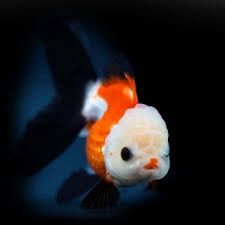Tri-Colour Oranda Goldfish (5-8cm)
Tri-colour Oranda Care Guide
Tank Setup
-
Tank Size: Minimum 75 liters (20 gallons) for one, with an additional 40 liters (10 gallons) per extra fish. They produce a lot of waste, so larger tanks are always better.
-
Substrate: Smooth gravel or sand to prevent injury to their delicate fins.
-
Décor: Keep decorations simple and smooth-edged. Provide open swimming space, as their flowing fins and head growth (wen) make them slower swimmers.
-
Filtration: Strong external or sponge filtration with gentle flow, as they are messy eaters and need pristine water quality.
Water Parameters
-
Temperature: 18–23°C (65–74°F)
-
pH: 6.5–7.5
-
Hardness: 5–19 dGH
-
Aeration: Essential, as goldfish require well-oxygenated water.
Diet
-
Omnivores – feed a balanced goldfish pellet or flake diet.
-
Supplement with blanched vegetables (peas, zucchini, spinach) and occasional protein (bloodworms, brine shrimp).
-
Avoid floating-only foods, as they may gulp air, increasing the risk of swim bladder issues.
Tank Mates
-
Best kept with other fancy goldfish varieties (Ranchu, Ryukin, Fantail, Lionhead).
-
Avoid fast, nippy, or aggressive fish.
-
Do not mix with slim-bodied goldfish (like Comets or Commons), as they are too fast and competitive.
Behavior
-
Peaceful and social; thrive in groups.
-
Slow-moving, so ensure they are not outcompeted for food.
-
Can reach 20–25 cm (8–10 inches), so plan tank size accordingly.
Special Care (Wen Growth)
-
The fleshy “cap” (wen) on their head grows throughout life.
-
Can obstruct vision if it becomes too large.
-
Occasionally, trimming by professionals may be required.
-
Keep water extra clean to prevent bacterial or fungal infections around the wen.
Breeding
-
Egg scatterers – males develop small breeding tubercles on their gill covers during spawning.
-
Provide fine-leaved plants or spawning mops.
-
Adults may eat the eggs, so separate breeders from eggs after spawning.
Interesting Fact
The Oranda was first bred in China and Japan and has been admired for centuries. In Japan, it’s called “Oranda Shishigashira”, meaning “Dutch Lionhead,” because traders believed the fish originally came from the Netherlands.

